Living with diabetes can sometimes feel like navigating a complex maze, especially when it comes to carbohydrates. We've all heard the warnings about carbs and blood sugar spikes, but does that mean you need to bid farewell to all your favorite starchy delights? Not at all! Let's embark on a journey to uncover the best carbohydrates for diabetes management, transforming this maze into a delightful exploration of tasty and healthy options.
Unraveling the Carb Mystery: Why They Matter
Carbohydrates, often simply referred to as “carbs,” are the body's primary source of energy. They break down into glucose, which fuels our cells and keeps us going. However, for people with diabetes, the body struggles to regulate glucose levels effectively, making carb choices crucial. The key lies in understanding the different types of carbs and their impact on blood sugar.
The Carb Spectrum: Simple vs. Complex
Carbs can be broadly classified into two categories: simple and complex. Simple carbs, like those found in sugary drinks and processed foods, are quickly digested, leading to rapid blood sugar spikes. On the other hand, complex carbs, abundant in whole grains, vegetables, and legumes, are digested slowly, providing a sustained energy release and helping to maintain stable blood sugar levels.
The Glycemic Index: Your Carb Compass
The glycemic index (GI) is a valuable tool for people with diabetes. It ranks foods based on how quickly they raise blood sugar levels. Low GI foods (55 or less) are digested slowly and cause a gradual increase in blood sugar, while high GI foods (70 or more) are rapidly digested, leading to sharp spikes. Aim to include plenty of low GI foods in your diet for better blood sugar control.
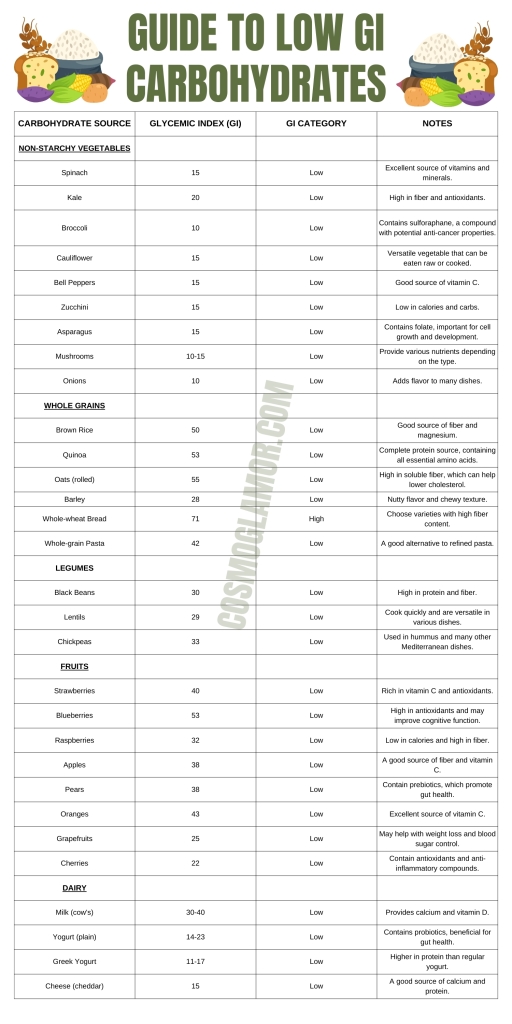
Star Players: The Best Carbs for Diabetes
Here's a breakdown of some of the best carb choices for people with diabetes:
1- Non-Starchy Vegetables
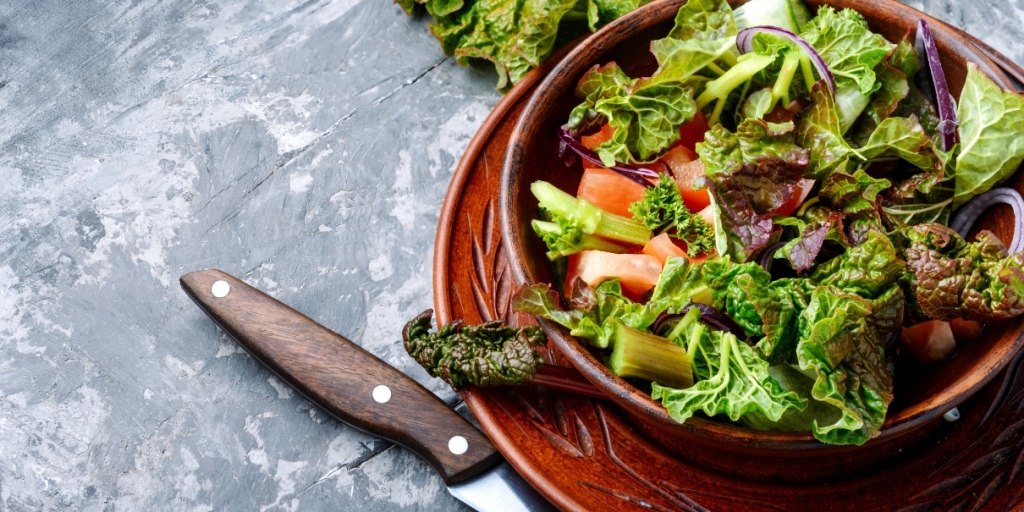
These nutritional powerhouses are low in calories and carbs, making them an excellent choice. Think leafy greens (spinach, kale, lettuce), broccoli, cauliflower, bell peppers, zucchini, asparagus, mushrooms, and onions. These veggies are packed with vitamins, minerals, and fiber, promoting overall health and helping you feel full without causing blood sugar spikes.
2- Whole Grains
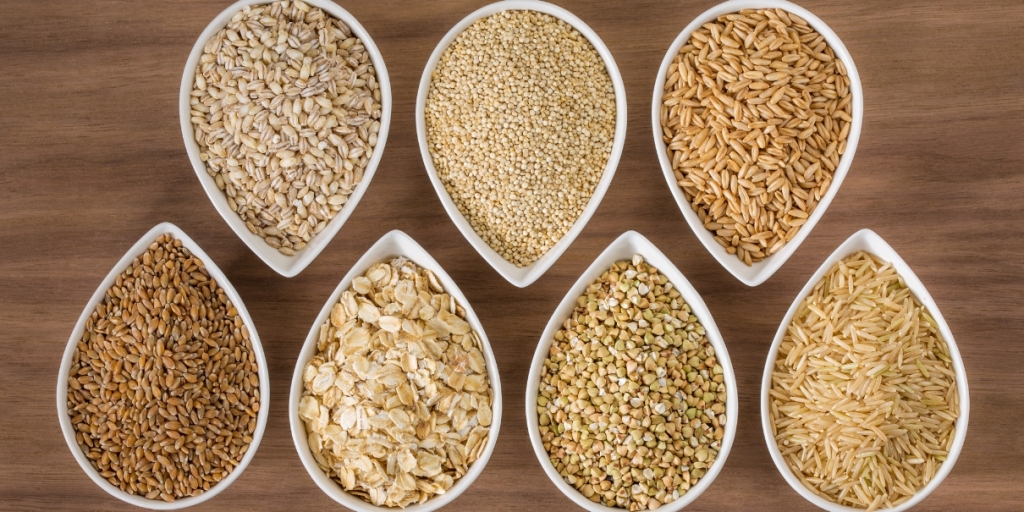
Unlike refined grains, which have been stripped of their nutrients, whole grains retain their fiber and essential nutrients, contributing to more stable blood sugar levels. Opt for options like brown rice, quinoa, oats, and barley. While whole-wheat bread is a step up from white bread, it's worth noting that it can have a higher GI. If you choose whole-wheat bread, look for varieties with added seeds and nuts, which can help lower the overall GI of your meal.
3- Legumes
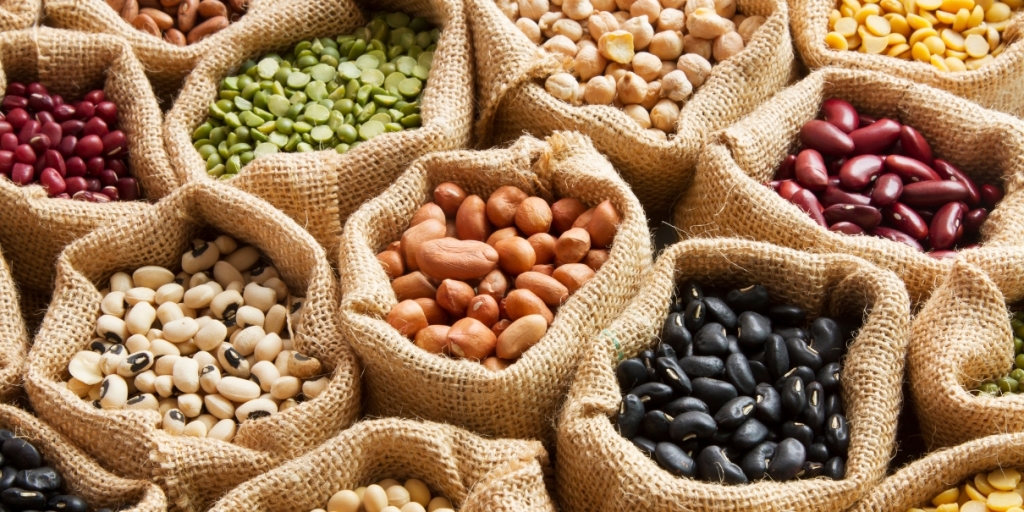
Beans, lentils, and chickpeas are not only rich in fiber but also provide a good source of protein. They help you feel full and satisfied, contributing to blood sugar control. Incorporate them into soups, stews, salads, or enjoy them as a side dish.
4- Fruits
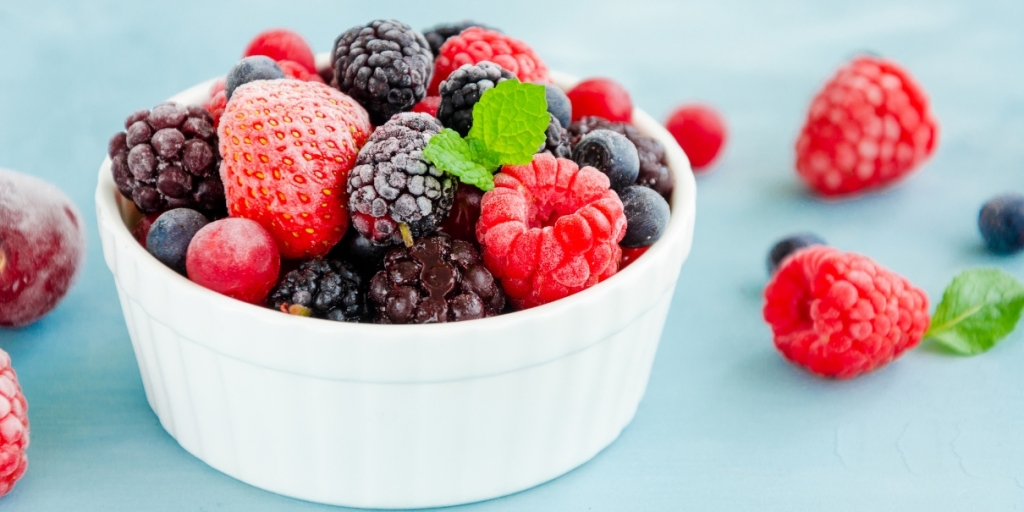
While fruits contain natural sugars, they also offer essential vitamins, minerals, and fiber. Choose low GI fruits like berries (strawberries, blueberries, raspberries), apples, pears, citrus fruits (oranges, grapefruits), and cherries. Enjoy them as a snack, add them to yogurt or oatmeal, or blend them into smoothies.
5- Dairy

Milk, yogurt, and cheese provide calcium and protein. Opt for low-fat or non-fat versions to manage calorie and fat intake. Greek yogurt is a particularly good choice due to its higher protein content, which can help with blood sugar control and satiety.

Portion Control: The Key to Success
Even the healthiest carbs can raise blood sugar levels if consumed in excess. Portion control is crucial for managing diabetes. Use measuring cups, a food scale, or the plate method to ensure you're consuming appropriate serving sizes. A registered dietitian can help you determine suitable portion sizes based on your individual needs and goals.
Carb Counting: Your Personalized Approach
Carb counting is a technique that helps you track your carb intake and make informed choices. Work with a registered dietitian or diabetes educator to determine your daily carb goals and learn how to count carbs accurately. This approach allows you to enjoy a variety of foods while staying within your carb limits.
Beyond Carbs: The Bigger Picture
While carbs play a significant role in diabetes management, they're just one piece of the puzzle. A balanced diet that includes adequate protein and healthy fats is essential for overall health and well-being. Protein helps with blood sugar control and satiety, while healthy fats support heart health. Additionally, regular physical activity and stress management also contribute to blood sugar control. Aim for at least 150 minutes of moderate-intensity exercise per week and practice stress-reducing techniques like meditation or yoga.
Creating a Winning Plate: Combining Carbs with Protein and Fats
For optimal blood sugar control and overall health, aim to create balanced meals that combine healthy carbs with protein and fats. For example:
- Breakfast: Oatmeal topped with berries and nuts, or scrambled eggs with whole-wheat toast and avocado.
- Lunch: Salad with grilled chicken or fish, quinoa, and a variety of vegetables.
- Dinner: Salmon with roasted vegetables and brown rice, or lentil soup with a side salad.
- Snacks: Greek yogurt with fruit and nuts, or sliced vegetables with hummus.
Conclusion
Navigating the carb maze doesn't have to be overwhelming. By understanding the different types of carbs, focusing on low GI choices, practicing portion control, and incorporating other healthy habits, you can take charge of your diabetes management and enjoy a fulfilling life. Remember, it's not about deprivation but about making informed choices that support your health goals. So, embrace the journey, explore the delicious world of healthy carbs, and savor each bite with confidence!
References
- The effect of fruit on glycemic control in type 2 diabetes mellitus: A systematic review and meta-analysis of randomized controlled trials
- Food, Nutrition, Physical Activity, and the Prevention of Cancer: a Global Perspective
- Effect of Legume Intake on Markers of Glycaemic Control in Adults with and without Diabetes: A Systematic Review and Meta-Analysis of Randomised Controlled Trials
- Dairy Consumption and Type 2 Diabetes: A Systematic Review and Meta-Analysis of Observational Studies
- Healthy Eating for Type 2 Diabetes
- International tables of glycemic index and glycemic load values: 2008
- Health implications of dietary fiber
- Effect of a brown rice-based vegan diet and conventional diabetic diet on glycemic control of patients with type 2 diabetes: a 12-week randomized clinical trial




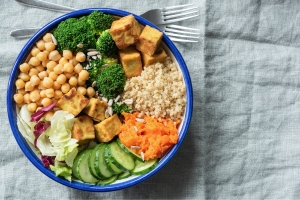



14 Responses
Thank you for sharing your success and research. It’s encouraging
Thank you so much for your encouraging words! I’m glad you found the information helpful. If you have any questions or need further assistance, feel free to reach out.
Best wishes!
I’ve always been told to avoid bread altogether if you have diabetes. This article mentions whole-wheat bread, but I’m still a bit hesitant. Is it really okay to eat bread,
Hi Lisa, It’s a common misconception that all bread is off-limits with diabetes. While it’s true that white bread is highly processed and can cause blood sugar spikes, whole-wheat bread, especially those with added seeds and nuts, can be a part of a healthy diabetes diet in moderation. The key is portion control and choosing the right type. Look for 100% whole-wheat bread with at least 3 grams of fiber per slice. As for how much, it depends on your individual carb goals, which you should discuss with your doctor or a registered dietitian. They can help you determine the appropriate serving size for you. A good starting point might be one or two slices per meal, depending on what else you’re eating with it.
I love fruit, but I’m worried about the sugar content. Are there any fruits that are completely off-limits, or are some better than others?
Hi Tom, Great question! Fruit is packed with vitamins, minerals, and fiber, so it’s definitely something you can enjoy with diabetes. While all fruits contain natural sugars, some have a lower glycemic index than others, meaning they have a gentler impact on blood sugar levels. Berries, apples, pears, and citrus fruits tend to be lower on the GI scale. Tropical fruits like mangoes and pineapples tend to be higher, so it’s best to enjoy them in smaller portions. It is not about avoiding any fruit completely, but being mindful of portion sizes and choosing lower GI options more often. Also, pairing fruit with a source of protein or healthy fat, like nuts or yogurt, can help slow down sugar absorption.
This is a really helpful article! I was recently diagnosed with type 2 diabetes and I’m feeling a bit overwhelmed by all the dietary changes. The explanation of the glycemic index is especially useful. My question is about fruit. I love fruit, but I’m worried about the natural sugars. Are there any fruits that are better than others for people with diabetes? And how much is too much?
Hi Melissa, thanks for your comment and I’m glad you found the article helpful. It’s completely understandable to feel overwhelmed after a new diagnosis, but you’re taking the right steps by educating yourself! You’re right to be mindful of fruit’s natural sugars, but it doesn’t mean you have to avoid it altogether. Fruit provides essential vitamins, minerals, and fiber.
As the article mentions, focusing on lower GI fruits is key. Berries (like strawberries, blueberries, and raspberries) are excellent choices because they’re relatively low in sugar and high in fiber. Apples, pears, citrus fruits like oranges and grapefruits, and cherries are also good options. Portion control is important too. Instead of eating a large bowl of fruit, aim for a smaller serving, like a cup of berries or a medium-sized apple. Pairing fruit with a source of protein or healthy fat, like a handful of nuts or some Greek yogurt, can also help slow down the absorption of sugar and prevent blood sugar spikes. It’s always a good idea to discuss your specific dietary needs with a registered dietitian or diabetes educator, as they can provide personalized guidance based on your individual situation.
This article does a great job of explaining the importance of choosing the right carbs. I’m a big fan of whole grains, but I’m a little confused about whole wheat bread. The article mentions it can have a higher GI. Does that mean I should avoid it completely? What are some good alternatives?
Hi Amanda, thanks for your question! I’m glad you’re focusing on whole grains – they’re a great choice for overall health. You’re right to point out the nuance with whole wheat bread. While it’s generally better than white bread, some commercially produced whole wheat breads can have a higher GI due to processing and added sugars.
It doesn’t necessarily mean you have to avoid it entirely, but it’s important to be selective. Look for whole wheat bread that lists “whole wheat flour” as the first ingredient and has a high fiber content (at least 3 grams per serving). Breads with added seeds and nuts can also help lower the GI. Better yet, consider other whole grain options like 100% whole grain or sprouted grain breads, or switch to other whole grains altogether, such as quinoa, brown rice, oats or barley. These tend to have a lower GI and provide a more sustained release of energy. Experimenting with different grains can also add variety to your diet and provide a wider range of nutrients.
This article is helpful, but it makes it sound a bit too easy, doesn’t it? ‘Just choose low GI foods!’ As if those labels are always accurate, or even available! And what about us busy folks who don’t have time to be measuring every morsel of food? I once tried to use a food scale at a dinner party, and let’s just say, it didn’t go over well. Is there a more practical, real-world approach to this carb-counting business?
Hi Martha, you’re absolutely right – it’s not always as simple as the labels suggest! GI values can vary depending on ripeness, cooking method, and even the specific variety of a food. And let’s be honest, food scales aren’t exactly party-friendly! While the article provides a good foundation, real-world application is key. For those busy days, focusing on whole, unprocessed foods (like those non-starchy veggies and legumes we talked about) is a great starting point. Instead of obsessing over exact measurements, try using your hand as a guide: a palm-sized portion of protein, a fist-sized portion of carbs, and fill the rest with non-starchy veggies. It’s not perfect, but it’s a practical way to manage portions without the need for constant measuring. And if you are going to be eating out, many restaurants have nutrition information available. You can also try to make educated guesses. If you are unsure, it is best to err on the side of caution and choose a lower-carb option. There are also some great apps that can help you track your food intake and make healthier choices. It’s all about finding a balance that works for your lifestyle, even a busy one like yours!
So, no more bread? No more pasta? What kind of life is that? I’ve lived a long and happy life, and let me tell you, a little bit of joy (and a good cookie) goes a long way. Are you saying I have to give up all my favorite treats just because I have diabetes? Is there any room for a little indulgence, or are we doomed to a life of শুধু শাকসবজি (that’s Bengali for ‘only vegetables’, darling)?
Hi Betty, I love your spirit! And absolutely not! A life without any treats is no life at all. Managing diabetes doesn’t mean complete deprivation. It’s about finding a balance and making smart choices most of the time. You can still enjoy your favorite foods, including bread and pasta, in moderation. The key is to choose whole-grain versions whenever possible, be mindful of portion sizes, and perhaps enjoy them less frequently. And a good cookie? Absolutely! Look for recipes that use almond flour or coconut flour and natural sweeteners like stevia or erythritol. Or, just enjoy a small portion of your favorite cookie and savor every bite. It’s about finding a sustainable approach that allows you to enjoy life’s pleasures while managing your blood sugar. Life is too short to say no to all the treats!